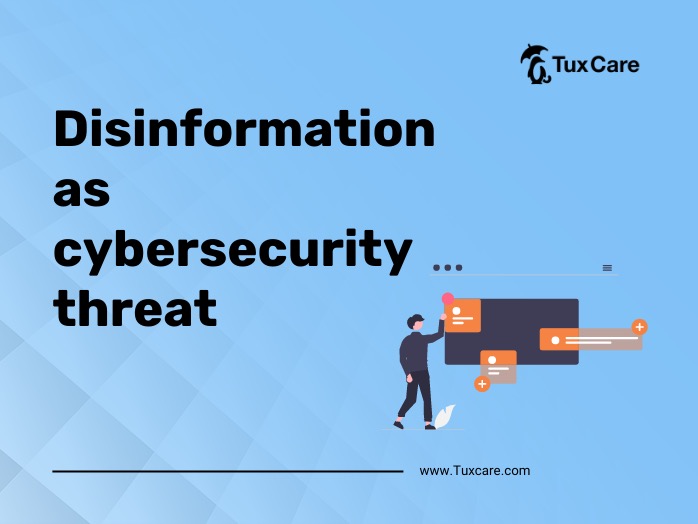Disinformation as a cybersecurity threat
The emergence of disinformation has put doubt on many elements of society, and it is also posing a huge danger to cybersecurity.
Disinformation is the purposeful spread of false information, while misinformation is the unintended spread of false information. Both can be used to manipulate people and organizations, but disinformation is more deliberate and malicious. Disinformation is a powerful tool in the area of social engineering, which is the art of persuading people to expose sensitive information or engage in illegal activities. Cyber threat actors use disinformation to deceive and influence unwary persons on numerous online platforms, including social media.
Russia is regarded to as a skilled practitioner of disinformation operations, and its current “Russosphere” campaign is a perfect example of how disinformation can be used as a strategic tactic in geopolitical situations. This effort targeted African countries in order to instill anti-Western attitudes and conform with Kremlin ideology.
To really understand the relationship between disinformation and cybersecurity, one must first understand the notion of social engineering. According to the European Union Agency for Cybersecurity, social engineering is persuading individuals to expose sensitive information or engage in illegal activities. Disinformation is a powerful tool in the area of social engineering.
Disinformation in the context of social engineering is defined by three major elements: missing context, misleading editing, and malevolent transformation. Cyber threat actors use these strategies to deceive and influence unwary persons on numerous online platforms, including social media. Cybercriminals use these approaches to achieve their nefarious purposes by selectively modifying visual material or producing counterfeit content using artificial intelligence.
Malvertising is a classic example of how the confluence of misinformation and social engineering has given rise to sophisticated cyberattacks. Malvertising is the practice of inserting harmful code into digital adverts or publications in order to disseminate disinformation and get people to click on infected links. As public knowledge of phishing attempts grows, fraudsters are turning to malvertising as a more evasive method of delivering malware.
Organizations must prioritize cybersecurity awareness training to successfully address the dangers posed by misinformation and social engineering. This involves training personnel on recognizing possible assaults and implementing recommended practices on a regular basis. Employees should develop a suspicious attitude, seeing all communications as possible threats. Verifying the reliability of sources, questioning urgency, and avoiding emotionally manipulative information are all important measures in avoiding social engineering frauds.
The sources for this piece include an article in Forbes.



 Documentation
Documentation Login
Login



